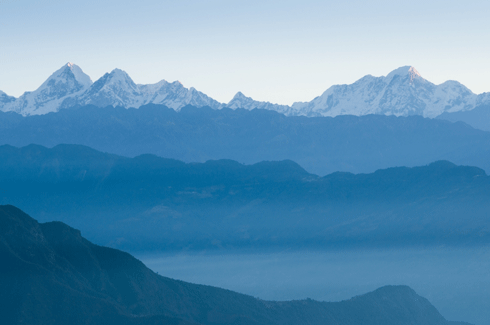
|
Published: 12 December 2011
New data on climate change in Himalayas: Earth’s ‘third pole’
The most comprehensive environmental assessment to date on the impact of climate change on snow and glacier melt in the Hindu Kush-Himalayan (HKH) region shows that rising temperatures are disturbing the balance of snow, ice and water, threatening biodiversity and the livelihoods of the 1.3 billion people living downstream in Asia’s major river basins.
The findings are summarised in three reports by the Kathmandu-based International Centre for Integrated Mountain Development (ICIMOD).
Dr Rajendra Pachauri, Chair of the Intergovernmental Panel on Climate Change (IPCC), said the reports ‘provide a new baseline and location-specific information for understanding climate change in one of the most vulnerable ecosystems in the world’.
‘They substantially deepen our understanding of this region – and of all mountain systems – while also pointing to the knowledge gaps yet to be filled.’
David Molden, Director General of ICIMOD, added: ‘The three reports published by ICIMOD provide the first authoritative data on the number and extent of glaciers and the patterns of snowfall in the world’s most mountainous region.
‘The Hindu Kush-Himalayan region is like a gentle giant. While physically imposing, it is one of the most ecologically sensitive areas in the world.’
The region is home to 210 million people and indirectly provides water for energy and food production to 1.3 billion people downstream.
Some 25 000 plant and animal species are found in the HKH, which contains a larger diversity of forest types than the Amazon. It also contains 30 per cent of the world’s glaciers – which is why it has been called the ‘Third Pole’.
Of the region’s 54 000 glaciers, however, only ten have been studied regularly to determine the net loss or gain of ice and snow (or mass balance). These studies indicate a loss of mass balance since 1980, with the rate of loss increasing sharply in recent years, particularly in the Everest area.
The HKH region’s glaciers and snow breathe life into the regional monsoon system and feed the headwaters of 10 major river systems that stretch across eight Asian countries – Afghanistan, Bangladesh, Bhutan, China, India, Myanmar, Nepal and Pakistan.
According to the Hon. Lyonpo Dr Pema Gyamtsho, Bhutan’s Minister of Agriculture and Forests and also Minister In-charge of Environment: ‘The effects of climate change will likely become more evident here than perhaps any where else first – and with the greatest impact – since this ecosystem supports the livelihoods of more people than any other coherent ecosystem in the world.’
The reports point out the limits of current data and the short time frame of most records (few extending more than 50 years). In addition, climate-related studies in the region suffer from a lack of repeat studies, permanent plots, field validation, and peer review.
Warming here is greater than the global average of 0.74°C over the past 100 years. However, this change is not evenly distributed. It is most pronounced in higher altitude areas like the central Himalayas and the Tibetan Plateau. In Lhasa, for example, temperatures increased by 1.35°C between 1950 and 1980.
The ‘clean’ glaciers of the Tibetan plateau are also retreating at a faster rate than the glaciers of the rugged central Himalayas, where debris creates an insulating effect, slowing melting.
In mountain forests, tree lines and species are shifting to higher elevations, and species already living at the highest elevations may have nowhere to go. Meanwhile, the vast grasslands of the Tibetan Plateau are being steadily degraded.
Mass losses from glaciers and accelerating reductions in snow cover are expected to ultimately reduce water supplies and hydropower potential, exacerbated by changes in the seasonality of flows in river basins supplied by melt water from snow and ice.
Droughts will likely affect greater areas, creating a greater reliance on irrigation, even as water sources become more restricted, according to the reports’ authors. The risk of flooding is also increasing with increased climatic variability.
‘From here, greater focus needs to be put on providing people and governments with options for climate-resilient development,’ said Molden.
‘These include adaptation and mitigation measures such as reducing emissions from deforestation and forest degradation, water storage measures, and regional cooperation around policies for managing water for energy, agriculture and development.’
Source: ICIMOD




